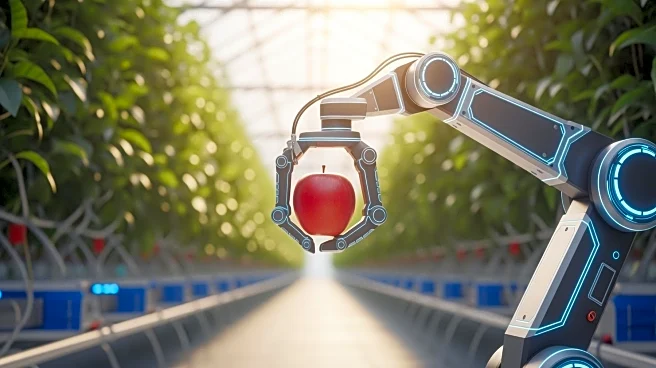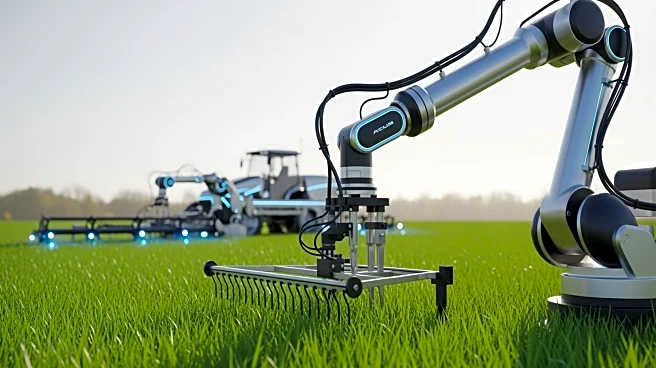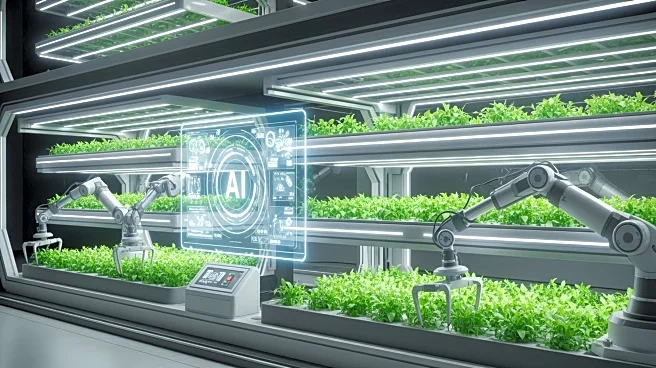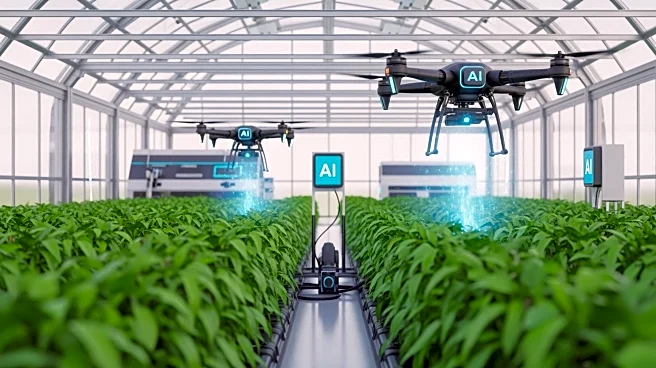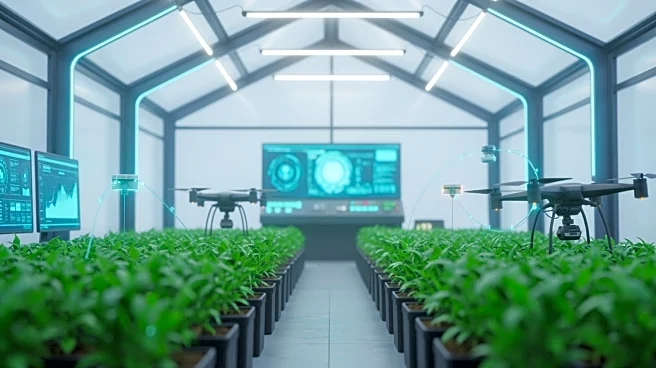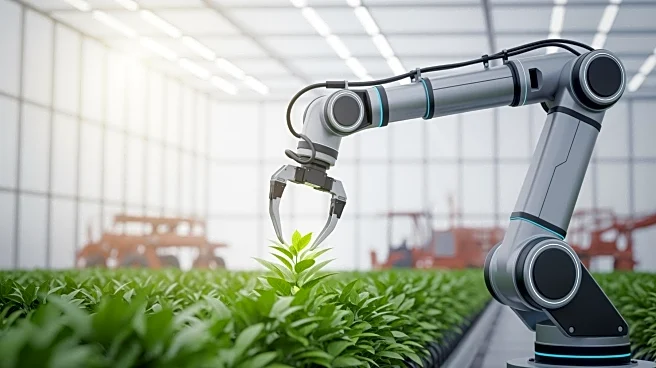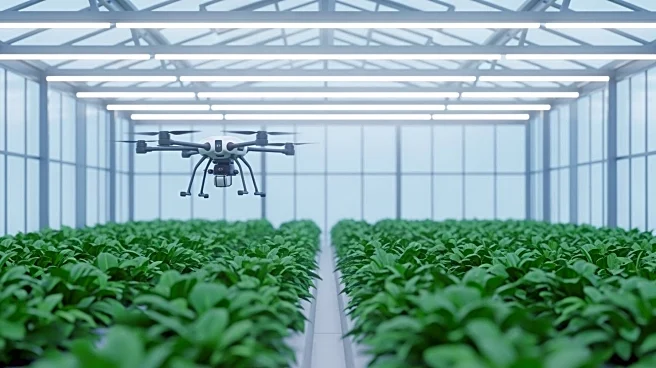What's Happening?
Venture capital funding for agrifood robotics and mechanization has experienced a significant decline, dropping 36% from $168 million in Q2 to $108 million in Q3 of 2025, according to preliminary data
from AgFunder. This marks a 57% year-over-year decrease compared to Q3 2024, when the category raised $252 million across 11 deals. The Robotics, Mechanization & Equipment category, which includes on-farm machinery, automation tools, and drones, has seen a total of $412 million in funding for 2025 so far. Despite the downturn, weed control remains a top area for agricultural robotics, with companies like SwarmFarm Robotics raising $30 million for their autonomous machines. Other startups, such as TRIC Robotics and Rootwave, have also secured funding for innovative weed management technologies.
Why It's Important?
The decline in funding for agrifood robotics reflects broader trends in the agrifoodtech sector, which saw a 32% drop in Q3 compared to the previous quarter. This downturn could impact the development and deployment of advanced agricultural technologies, potentially slowing progress in areas like automation and precision agriculture. However, the continued investment in weed control technologies highlights the ongoing demand for solutions that enhance agricultural efficiency and sustainability. The U.S. remains a leader in this sector, with significant funding directed towards domestic startups, indicating a strong interest in maintaining technological leadership in agriculture.
What's Next?
As the data is preliminary, there is potential for funding figures to increase as more information becomes available. The ongoing evolution of the crop robotics sector, as noted by The Mixing Bowl's 2025 Crop Robotics Landscape, suggests that new entrants and maturing technologies will continue to shape the industry. The convergence of robotics, sensing, and artificial intelligence is expected to drive further innovation, with a focus on autonomy for row crops and commercial activity in weeding. Stakeholders in the agrifoodtech industry will likely monitor these developments closely to identify new opportunities for investment and growth.
Beyond the Headlines
The decline in funding may prompt agrifoodtech companies to explore alternative financing strategies or partnerships to sustain their operations and innovation efforts. Additionally, the emphasis on weed control technologies underscores the importance of addressing environmental and sustainability challenges in agriculture. As these technologies become more integral to modern farming practices, there may be broader implications for labor dynamics and the role of human workers in agriculture.
